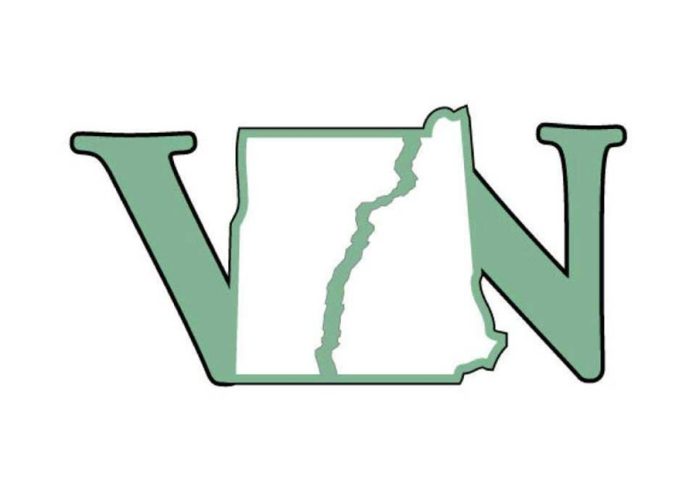LEBANON — Lebanon’s most heavily paved districts could stand for a little rewilding, say members of the city’s Tree Advisory Board. To mitigate the effects of extreme heat, the city should break up sidewalks with trees.
Where heat-absorbing asphalt dominates and trees are scarce, temperatures are rising in areas researchers are calling “heat islands.” Planting trees in urban areas can cool the effects of extreme heat by providing shade and absorbing heat from the sun that would otherwise warm the neighborhood even more.
Last spring, the Tree Advisory Board began mapping heat islands across Lebanon. Member Charlie DePuy, who has a background in urban planning and conservation, would march down the street on the hottest summer days, collecting temperature data from a pocket-sized thermometer he connected to his phone. He was soon joined by a squad of Lebanon high school students who were able to translate the data the team collected into a series of maps of the city’s heat islands.
These hot spots — which can range in size from a supermarket parking lot to an unshaded sidewalk — are becoming increasingly important as higher than average summer temperatures increasingly pose a health crisis. Prolonged exposure to extreme heat can cause heat stroke, cramps, nausea, and more. The 2021 New Hampshire climate assessment, which identifies the impacts of climate change, predicts more days of extreme heat each year.
“It’s pretty obvious that walking on the street and it gets hot, and walking under a tree cools it down,” DePuy said. But he and fellow board member Mary Maxfield felt that collecting data made the problem clear: “It helps make it visible, especially on a map.”
Lebanon’s Ministry of Human Services told the Tree Advisory Board that it is most concerned about the impact of extreme heat in downtown Lebanon and western Lebanon, particularly older buildings with many apartments in sparsely tree-dense, high-populated neighborhoods.
Lower-income residents are more likely to live or spend time in hotter areas — nearby or on heat islands — the Tree Advisory Board reported to City Council last month. To supplement the raw temperature data, Maxfield, a former Lebanon high school biology teacher, surveyed more than 100 Lebanon residents about their experiences of extreme heat.
“Some people felt immune to the ravages of heat because they could go to a cool house when needed, or you could go to the woods at certain times of the day,” Maxfield said. “But there are some people – those who spend a lot of time at bus stops, people without shelter, people who live in their cars – they are in extreme dire straits when it comes to extreme heat.”
Any tree ordinance Lebanon enacts should consider “the human bit,” Maxfield said. “If you ever go to Walmart and see the bus stop there, it’s pure asphalt and concrete in front of a big white wall. People have to stand there for maybe half an hour on the hottest day in summer.”
Planting more trees is the best way to deal with urban heat islands, said Lebanese Mayor Tim McNamara. But it requires careful planning.
That’s why the Tree Advisory Board was founded in the first place, he added: “We wanted to get advice on how to proceed with planting trees in the future.”
McNamara’s goal is to draft a tree planting budget for a vote in December.
The budget will guide a long-term tree planting and replacement plan.
“As we all know, trees don’t live longer than we do, and you have to plan for that,” he said.
The ordinance should take into account where to plant, with a focus on the urban areas determined by the Tree Council and on the species to be planted.
To successfully plant trees in urban areas, a tree’s resilience to things like road salt must be considered. Trees like cedar and birch do well in higher stress environments.
Cost is also a consideration.
“Of course, to get the most bang for your buck, you will plant smaller trees. If you want to plant a 12- to 16-inch maple that is 40 feet tall, that’s a $20,000 investment,” McNamara said. A 14-foot tree is less expensive: “The cost to get that tree into the ground is probably closer to $3,000 or $4,000. So you can plant a lot of smaller trees for the price of one big tree.”
Large planter boxes called “biocells” help with “street planting,” a term used by arborists and planners to describe placing trees in the middle of sidewalks.
“They prevent compaction from the surrounding asphalt and give the tree roots a place to expand,” McNamara said. “And they seem to be quite successful.”
Frances Mize is a member of the Report for America Corps. She can be reached at fmize@vnews.com or 603-727-3224.
www.vnews.com
https://www.vnews.com/Group-IDs-Urban-Heat-Islands-in-Lebanon-50577712













